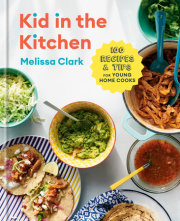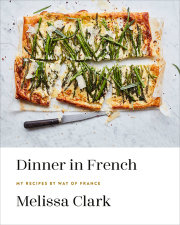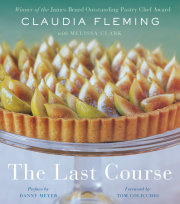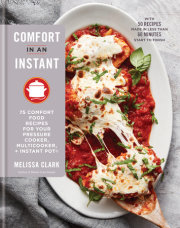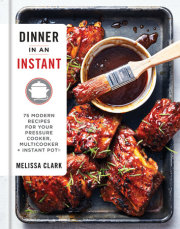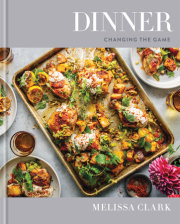Introduction There’s nothing that makes me appreciate the streamlined ease of a one-pan meal more than watching a professional chef at work.
The first time I stepped into a restaurant kitchen to observe the cooks, it was at a popular, cavernous restaurant called An American Place in New York City, where I had a college job as a coat checker. Sometimes, on a warmish night when coats were sparse but the dining room was crowded, I’d slip into the kitchen to take in the drama.
There was all of the exciting bustle and energy you’d imagine, but what riveted me most was the elaborate choreography the cooking entailed, completely different from anything I’d seen done at home.
To make one menu item, a chef might use three separate pans, two bowls, and an array of plastic squeeze bottles. There’d be a skillet for sautéing the salmon fillet, an oval sizzle platter to crisp the skin, another skillet to brown the accompanying sugar snap peas. In one bowl, pea shoots would be tossed with a couple of squirts from various squeeze bottles; in another, a sauce was reheated over a bain-marie.
Scurrying in the background were the dishwashers who cleaned up every greasy pan, dirty spatula, and sticky bottle. Without them easing the flow, the chefs would have sweat even more profusely than they already did.
The whole thing made me understand why many recipes in chefs’ cookbooks were such a pain to make in my home kitchen. Chefs don’t care about using every pot and pan in the house, because they don’t have to think about having them pile up in the sink; they have dozens of pots and pans . . . and people to clean them.
I took this lesson with me when I became a food writer and started coauthoring cookbooks with celebrity chefs. Could I translate what they did in a professional kitchen using half a dozen pots, pans, and bowls into a recipe that would work just as well at home using one or two?
That was where my obsession with recipe streamlining began. And it continues to this day, now that I’m a food reporter and recipe columnist for
The New York Times. My job is to create recipes home cooks want to add to their repertoire. And for every single recipe I develop, whether for a cookbook or for my Good Appetite column at the paper, I deconstruct the process. Is there a way I could make this recipe easier, faster, and tastier? And what’s the minimum number of pots, pans, and dishes I need to dirty to get here? It’s a discipline that has slowly solidified into a less-is-more philosophy—less work, less mess, more flavor.
This book of one-pan recipes is the culmination of it all.
The recipes are simple but not simplistic, with complex, layered flavors that you can achieve with minimal stress.
Along with reducing the number of pots and pans all the way down to one, I’ve also limited the number of utensils and bowls. It’s not just for the sake of cleanup, it’s also for convenience and flow while cooking. It’s just easier to use the same bowl in which you mixed your vegetables to whip up the salad dressing, without having to stop and wash it in between.
I’ve applied this same spirit of paring down to techniques as well. Case in point: where I can get away with not browning every side of every piece of chicken for a stew or a braise, I don’t. In the Cheater’s Chicken and Dumplings on page 233, I brown only as many chicken pieces as can fit in one layer in the Instant Pot at once. This browning builds up enough fond (those umami-rich bits on the bottom of the pan) to flavor the sauce, without you having to stand over the splattering pan to sear each piece.
Shortcuts like this mean that the majority of the recipes in this book are weeknight friendly—the kinds of meals you can start thinking about at 6:00 p.m. and have on the table by 7:00 p.m. But they’re also weekend delicious, out-of-theordinary dishes you’d be proud to serve to guests.
Even though I’m a thoroughly committed omnivore, almost half of the recipes in this book are meatless. And many of the ones that do contain meat use a lot less of it than others of their kind. Plus, for every dish in which it will work without diminishing the flavors, I’ve included a vegan variation. I’ve been eating less meat in this ecologically fragile moment, and these recipes reflect that shift.
Finally, a note on the number of servings in these recipes. For this book, the yield is necessarily dictated by the size of the pot or pan: the larger the vessel, the more people you can feed from it. Big, deep pots like Dutch ovens and soup pots can hold more servings than shallow sheet pans and skillets (depending on the recipe). Therefore, it follows that sheet pan recipes tend to feed only 2 to 4 people, whereas something cooked in a soup pot may feed 6 to 8.
Of course, if you’re hankering for one of the sheet pan recipes—maybe the Roasted Chicken “Tagine” with Dates, Olives, and Lemon on page 24—but looking to feed more than 3 or 4, you can always break the one-pan rule, double the ingredient amounts, and cook it all on two sheet pans. (Isn’t every rule made to be broken?) Just keep in mind that having two pans in the oven rather than one might delay browning, so you may have to add a few extra minutes to the cook time. Or you can try bumping up the heat by 25 degrees to encourage caramelization. Running the pans under the broiler at the end can brown things up, too. Just keep an eye on everything and make adjustments as you go.
The recipes here are guides, meant to be followed but only up to a point. After all, you know your tastes and preferences, and your kitchen and kitchen equipment, better than I do. Trust your senses, trust your gut, and don’t be afraid to experiment. Even if you do occasionally get something wrong, most of the time you’ll get it deliciously right.
And in either case, you won’t have a pile of dishes in the sink when you’re done.
Copyright © 2022 by Melissa Clark. All rights reserved. No part of this excerpt may be reproduced or reprinted without permission in writing from the publisher.












